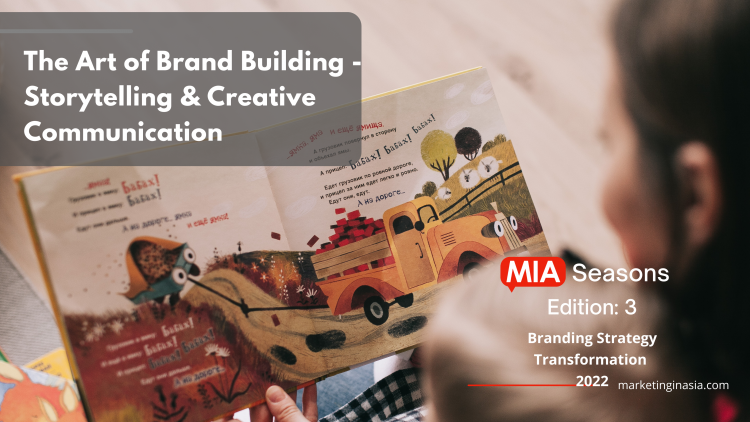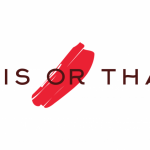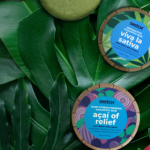Next time, if you get a chance to read to a toddler, try this experiment. Narrate a story to a toddler. Remember that it should be the one they haven’t heard before, keep the tone constant, expressions zero and no gestures whatsoever. The next day, ask them to narrate it back to you and notice how much they remember. Now, pick up another story, and this time engage with all their five senses while you read out to them. Get creative with your dialogue delivery, add some tunes, make funny faces and test the recall the next day. You will be surprised at the difference in retention between the two!
Grownups are no different. The innate nature and human psychology work the same even for us adults. The more we can associate with something and indulge in it at a deeper level, the greater the recall rate. How an idea is communicated is equally important as how it is articulated.
Table of contents
- Why is communication important?
- Creative communication – the way to win
- How storytelling and branding go hand in hand
- Benefits of brand storytelling
-
Report Best Brand Building Practices
Why is communication important?
We have often heard saying like “communication is the key” or “Communication to a relationship is like oxygen is to life. Without it…it dies” – Tony A Gaskins Jr. This is because communication evokes feelings and associates the sentiment to the incident and stores the memory in your brain. Unfortunately, as today’s brands introduce themselves to the masses, with new social media platforms and automation tools that are constantly advancing, something about the human connection is being lost. The world of marketing has been changing over the last few years. With new technology, the way we communicate is constantly evolving. The need to be creative in the way we communicate has never been more critical. Brands need to be able to tell their stories in ways that are engaging and memorable.
According to brand positioning research conducted almost a decade ago, that will always hold; if a company successfully connects emotionally with its customers, it can count on 94% of those customers to recommend it to others. Marketing In Asia (MIA)’s research revealed that while 73% of the respondents agreed with the concept, only 37% were actually able to leverage it.

Image source: MIA Research Best Brand Building Practices
Also read: How Branded Content Is Changing The World Of Advertising & Building Brand Loyalists
Creative communication – the way to win
Every Indian from the 90s remembers Cadbury’s delicious mouth-watering ad film that created a world of chocolate where anything and everything was edible in the form of chocolate or the daily dose of laughter induced by those tummy ticking Fevicol commercials. They all touched all the right nerves and are still fondly remembered. Creatively embedding your product in the minds of your consumers is essentially the essence of branding.
Marketing In Asia research data indicated that all the participants used direct marketing to communicate the benefits of their product/service, and 56% used catchy and relevant hashtags on social media, followed by 45% who used user feedback and turned it into brand love with user-generated content and only 4% used humour in their ads and marketing campaigns.

Image source: MIA Research Best Brand Building Practices
Experimenting with the ways of communication can help unforgettably connect with your customers. A tag line that they can resonate with, a jingle that they can hum, a message that they can’t forget, so on and so forth.
How storytelling and branding go hand in hand
Phillips delivers one of the best brand narratives in this category. When it launched its shaving unit, it turned to storytelling for branding, and it made Phillis a household name that caters to making life better through innovation. Philips used a simple yet compelling story to gain an audience – A barber that helps the less unfortunate by shaving and trimming their hair, even when they can’t afford it. He transforms how people look and helps them harness self-love, and the change that it brings to their lives is astounding! This simple story got Philips $27MM in sales [1].
Unfortunately, our data reveals that only 22% of the participants used storytelling for branding because a majority (51%) did not know how to use it, and 38% were not skilled in it.

Image source: MIA Research Best Brand Building Practices
Benefits of brand storytelling
Brand storytelling is not only about telling people about the products or services you offer; it’s also about telling your own story. Why are you in business? What inspires the team behind your brand? How is your product/service different?
You should ensure that your story is conveyed constantly to customers to remind them who you are, why you exist and what your product offers. This will be essential in developing a solid relationship with prospective customers.
-
Storytelling helps to stand out
How do you differentiate yourself from others with so many companies offering the same range of products? Use your story! A story that is relevant to the masses can connect them with you at a deeper level and make you stand out from the crowd.
-
Build your tribe
A story has the power to bring like minds together in the form of fan clubs, book clubs etc. Deliver your message in such a manner that aligns with the need of your audience and weave into your message the emotions your target audience can connect with, and bang! You have your tribe.
-
Be aligned with a higher purpose
Environmental degradation has had a significant impact on the youth, forcing them to come out of their shells and work towards the cause. They want to work for a better future and want to be associated with people who are aligned with their cause. A Deloitte study revealed that 20% of consumers consider how the company treats the environment, and 19% of consumers look into how the company supports the community in which they operate before choosing a brand [2]. Companies that put their profits where their values lie are experiencing higher customer loyalty.
The genetic wiring of human brains is such that we are naturally drawn to a good story and immediately begin to associate ourselves with it. A compelling brand narrative with a message and purpose is enough to convert brand acquaintance to brand love.
Conclusion
How you want to communicate with your audience is up to you, but it is essential that the way you choose is creative, indulging, and invoking all the right emotions and is best if weaved into a story. The only way to truly touch someone’s heart is through communication, and to leave an impression is through creative communication. Organisations that understood and leveraged these skills are no longer mere brands but legacies!
To know more about other brand-building practices – download the report.
- https://www.ogilvy.com/ideas/brand-building-automation- age
- https://www2.deloitte.com/us/en/insights/topics/marketing- and-sales-operations/global-marketing-trends/2020/purpose- driven-companies.html
















